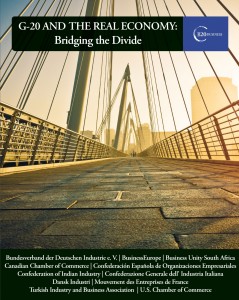- kristalalley@gmail.com
In response to a question regarding whether anyone has studied the cumulative effect of the financial reforms and the impact of these reforms on credit availability and economic recovery– U.S. Federal Reserve Chairman Ben Bernanke stated, “I can’t pretend that anybody really has. It’s just too complicated.”
 “The financial crisis that first rocked advanced economies in 2007, and whose aftershocks continue to reverberate around the world, mobilized G-20 policy makers to devise new rules aimed at mitigating risk in the global economy. It also led many businesses to seek new business models and recalibrate investment decisions in light of the expected shifts in the policy environment in all major markets. While each new policy tries to address specific risks and perceived market vulnerabilities, the convergence of the new regulations on the non-banking sector is akin to experiencing a very long and drawn out earthquake, where the familiar ground of running a business is constantly shifting.”
“The financial crisis that first rocked advanced economies in 2007, and whose aftershocks continue to reverberate around the world, mobilized G-20 policy makers to devise new rules aimed at mitigating risk in the global economy. It also led many businesses to seek new business models and recalibrate investment decisions in light of the expected shifts in the policy environment in all major markets. While each new policy tries to address specific risks and perceived market vulnerabilities, the convergence of the new regulations on the non-banking sector is akin to experiencing a very long and drawn out earthquake, where the familiar ground of running a business is constantly shifting.”
So begins a booklet released by the U.S. Chamber of Commerce together with the B20 business federations. The booklet — G-20 and the Real Economy:Bridging the Divide (pdf) brings together short stories from businesses in the United States, Germany, the Netherlands, Turkey and India as well as quotes from South Africa, Denmark and the United Kingdom. It attempts to bridge the gap between the world as envisioned by shell-shocked regulators and that experienced by companies in major markets.
Overall, the booklet explores the following questions while at the same time providing a brief overview of a new global financial architecture that is evolving in response to the financial and economic crisis.
• Are there differences in the way the regulations are perceived by business in various G-20 markets?
• Could the new regulations add to economic volatility by limiting the way companies manage risk?
• Could the regulations create new business opportunities?
• Could they force companies to set aside cash that would otherwise be used for productive investments?
• Could the regulations create incentives for companies to move their business operations to new locations?